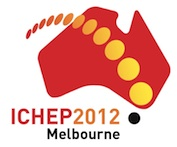Speaker
Dr
Alessandro Bertolin
(INFN Padova (IT))
Description
The production of beauty quarks in ep interactions has been studied with the ZEUS detector at HERA for exchanged four-momentum squared Q^2 > 10 GeV2, using an integrated luminosity of 363 pb-1. The beauty events were identified using electrons from semileptonic b decays with a transverse momentum 0.9 < p_T^e < 8 GeV and pseudorapidity |eta^e| < 1.5. Cross sections for beauty production were measured and compared with next-to-leading-order QCD calculations. The beauty contribution to the proton structure function F_2 was extracted from the double-differential cross section as a function of Bjorken-x and Q^2.
Measurements of cross sections for events with charm and beauty jets in deep inelastic scattering at HERA are presented. Events with jets of transverse energy E_T^ jet > 6 GeV and pseudorapidity −1.0 < ηjet < 1.5 in the laboratory frame are selected in the kinematic region of photon virtuality Q2 > 6 GeV2 and inelasticity variable 0.07 < y < 0.625.
Measurements are also made requiring a jet in the Breit frame with E_T^∗jet > 6 GeV. The data were collected with the H1 detector in the years 2006 and 2007 corresponding to an integrated luminosity of 189 pb−1. The numbers of charm and beauty jets are determined using variables reconstructed using the H1 vertex detector with which the impact parameters of the tracks to the primary vertex and the position of secondary vertices are measured. The measurements are compared with QCD predictions and with previous measurements where heavy flavours are identified using muons.
Author
Dr
Alessandro Bertolin
(INFN Padova (IT))
